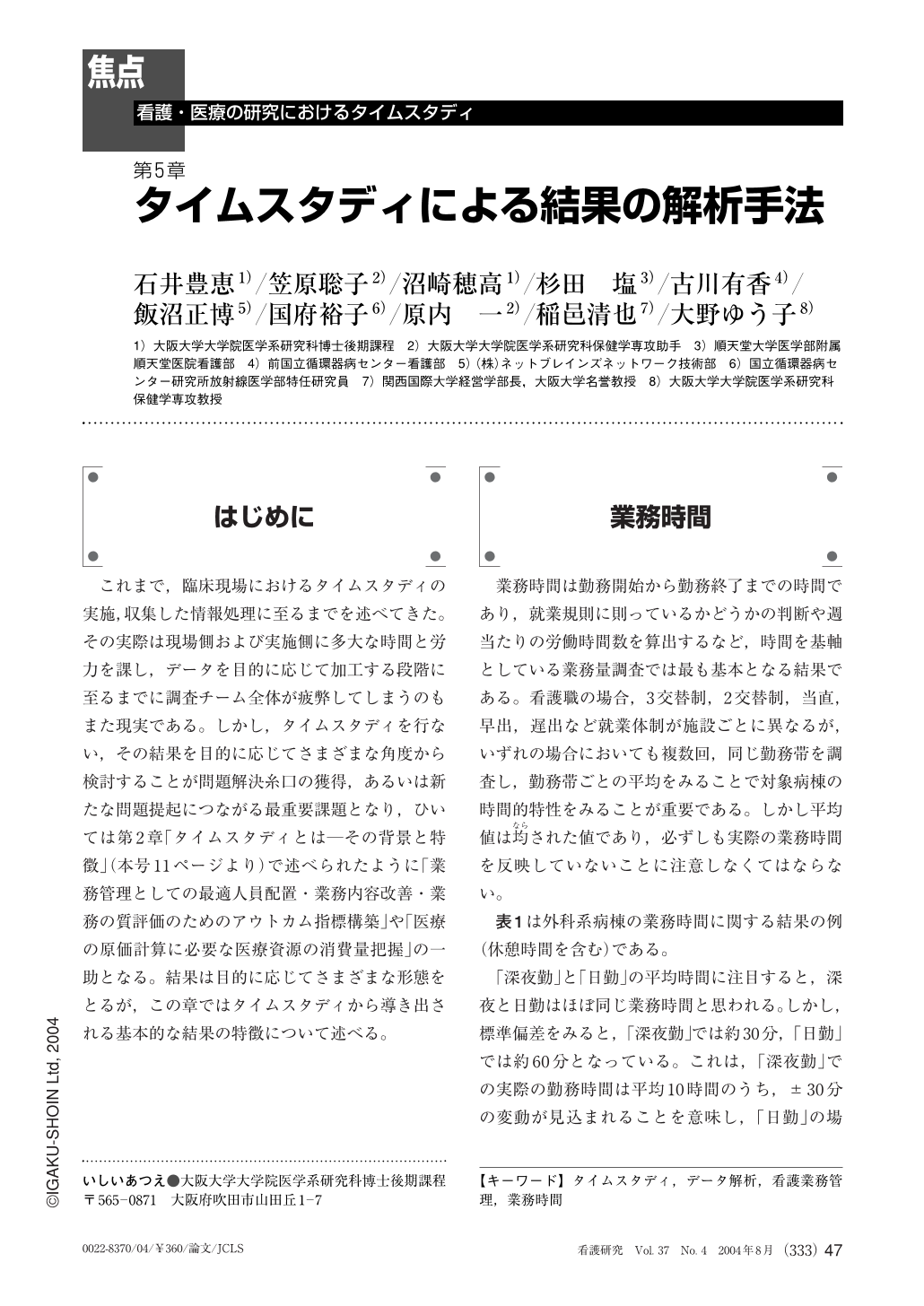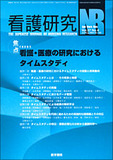Japanese
English
- 有料閲覧
- Abstract 文献概要
- 1ページ目 Look Inside
はじめに
これまで,臨床現場におけるタイムスタディの実施,収集した情報処理に至るまでを述べてきた。その実際は現場側および実施側に多大な時間と労力を課し,データを目的に応じて加工する段階に至るまでに調査チーム全体が疲弊してしまうのもまた現実である。しかし,タイムスタディを行ない,その結果を目的に応じてさまざまな角度から検討することが問題解決糸口の獲得,あるいは新たな問題提起につながる最重要課題となり,ひいては第2章「タイムスタディとは―その背景と特徴」(本号11ページより)で述べられたように「業務管理としての最適人員配置・業務内容改善・業務の質評価のためのアウトカム指標構築」や「医療の原価計算に必要な医療資源の消費量把握」の一助となる。結果は目的に応じてさまざまな形態をとるが,この章ではタイムスタディから導き出される基本的な結果の特徴について述べる。
Time and motion study gives us plenty of suggestions regarding the healthcare management. We can interpret and explain its result in various ways depending on the purpose of the study. In this chapter, we describe the basic and typical way of interpretation, advantages of the time and motion study, and major consideration for its implementation. Specifically, we refer to such points including “working hours”, “distribution of tasks”, “time series distribution of tasks”, “differences of job classification”, “difference of tasks by profession”, “focusing on the specific tasks”, “parallel implementation of multiple tasks”, “time and motion study focusing on the patient” “integration of time and motion study data, patient data and nurse data”. We may also employ much more advanced methods of analysis depending on the purpose of the study.

Copyright © 2004, Igaku-Shoin Ltd. All rights reserved.


